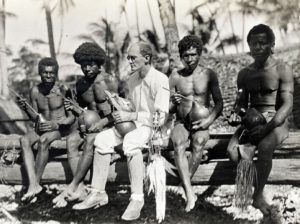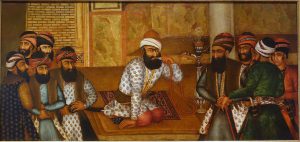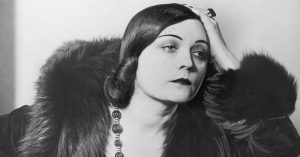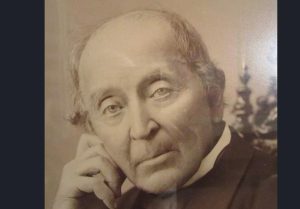Bronisław Malinowski
He studied the sexual lives of “savages,” revolutionized anthropology, got entangled in a love triangle, and wrote over a dozen books that are still considered classics of the humanities. Bronisław Malinowski was born in 1884, though he spent most of his adult life in England and the Melanesian islands, where he conducted fieldwork. As one of the first anthropologists, he decided to go out into the field instead of— as was common before—restricting his work to the comfort of a university office.
Malinowski developed rigorous principles for anthropological methodology, based primarily on direct research among the studied communities. His approach involved living with the subjects, actively participating in their daily lives, and using the local language. Not only did he revolutionize anthropology and become a pioneer of field research, but he also left behind a dozen or so works that are still a pleasure to read and well worth exploring. His most famous book is titled The Sexual Life of Savages. Today, we might call that a “clickbait” title.

Tadeusz Juda Krusiński
He survived six months in a besieged city, where death stared him in the face nearly every day. He won the favor of Eastern rulers and came to know the Orient like the back of his hand. He was fluent in Turkish and Persian. The world knew him as a diplomat, scholar, physician, and translator. Poland has nearly forgotten him, though Tadeusz Juda Krusiński is a truly fascinating figure.
This Polish Jesuit witnessed the fall of the Persian state with his own eyes, which he later described in detail. His account of the siege of Isfahan still impresses readers today. Let us add that Krusiński achieved fame as a great scholar during his lifetime, earning the respect of Eastern rulers. He is considered the father of Polish Iranian studies and one of the first Polish orientalists. It’s also worth mentioning his passion for long treks—he traveled across Persia many times and journeyed through Turkey, Syria, Siberia, Kurdistan, Palestine, Arabia, and Afghanistan.

Pola Negri (Apolonia Chałupiec)
She was the first famous woman to paint her toenails, walk a cheetah on a leash, and wear a turban. But Pola Negri was above all an international silent film star. She began her career in Warsaw and soon moved to the U.S., where she quickly achieved fame on the silver screen.
The dark-haired actress from the Vistula River conquered Hollywood and became a sex symbol. Besides numerous film roles, she was also known for her colorful private life—her romances made headlines, and among her lovers were cinema giants such as Charlie Chaplin and Rudolph Valentino. It’s worth noting that Negri was loved not only by audiences—she also won the favor of critics. And although silent cinema is now largely forgotten, we should remember the Polish woman who made a significant contribution to its development.

Ignacy Domeyko
A hero of Poland, Chile, Lithuania, and Belarus. He was friends with Adam Mickiewicz, took part in the November Uprising, developed Chilean science and agriculture, and joined expeditions into virgin territories—in short, that was Ignacy Domeyko.
This Polish geologist settled permanently in Chile, where he became one of the driving forces behind scientific and economic progress. Not only did he conduct pioneering research in the country, but he also reformed the education system, contributing to the development of agriculture and the training of future generations of scientists. He also personally took part in scientific expeditions, including to areas inhabited by the Araucanians—a tribe that had previously avoided contact with white people. The indigenous people charmed the Polish researcher, who later became their passionate defender. To this day, Domeyko is recognized as a national hero in Chile.

